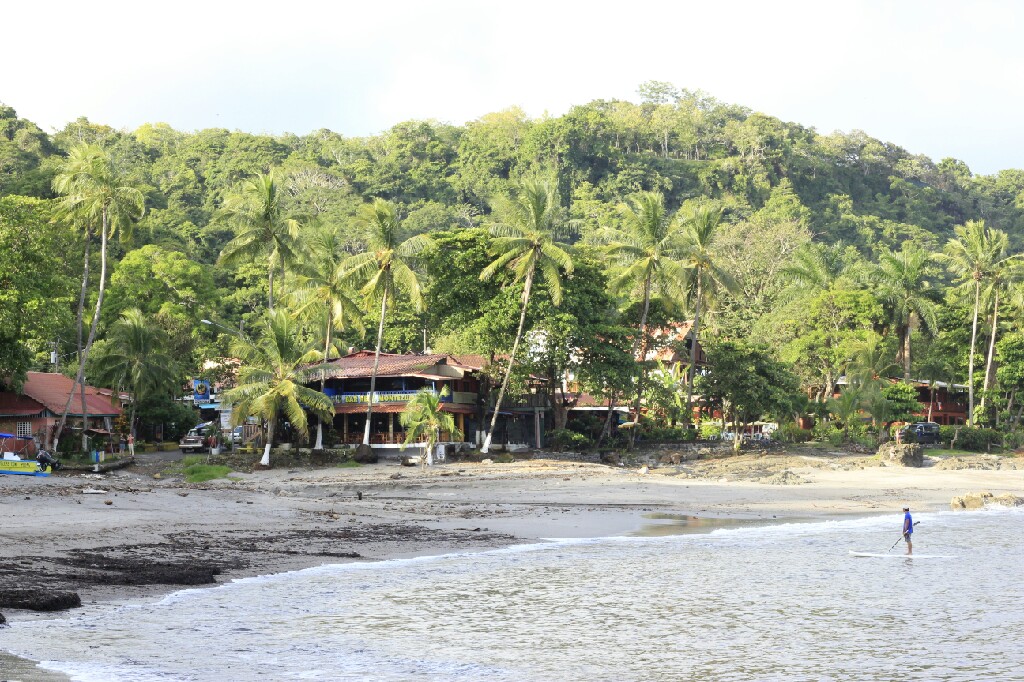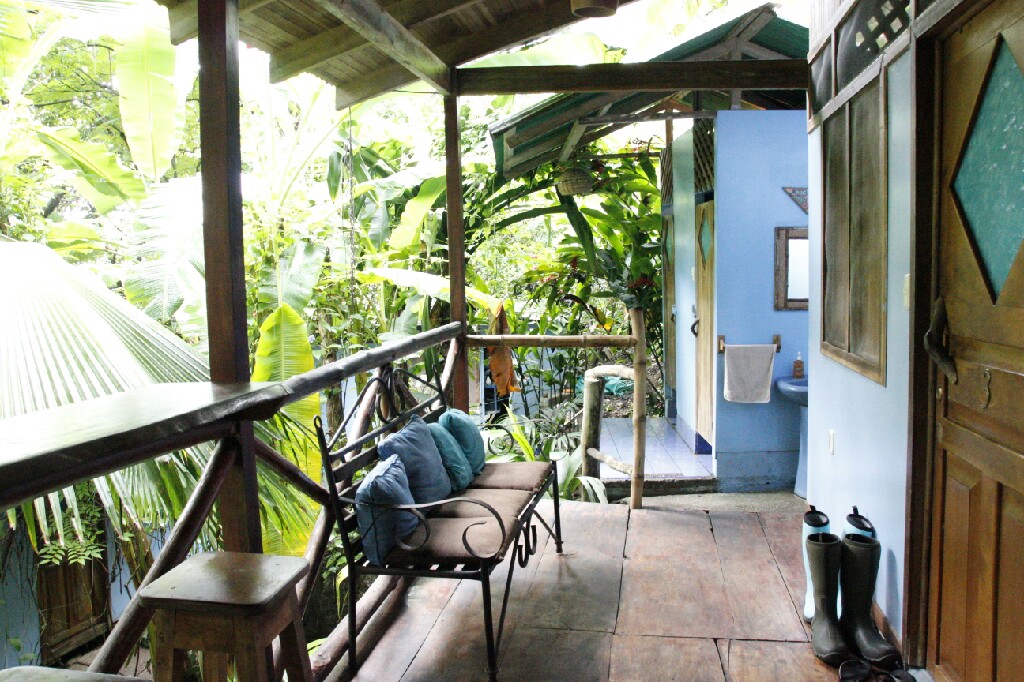Montezuma is said to be a place fairly far away from the common sort of tourism and commercialism in general. It’s supposed to be a melting pot of people from around the world who settled there to find inner peace and freedom. Of couse this encompasses also the alternative crowd that is into esoterical and spiritualistical stuff. Yoga is practiced there a lot and you’ll also find stuff like bodywork, surf schools, firedancing, drum circles and vow renewal rituals.
Montezuma itself is a very small town. We went there by taking a ferry from Puntarenas to Paquera that took a bit more than an hour to cross the gulf of Nicoya. In Paquera we boarded a bus then and had to drive for another two hours. For the last few kilometers and half-hour drive we had to switch to a chicken bus that wobbled along an unpaved and washed-out road. (Large parts of the Nicoya peninsula are only accessible by 4WD vehicles during the rainy season.) We were quite surprised that a place that is mentioned in most travel guides felt a bit inaccessible and turned out to be tiny. We were expecting a pacific coast variant of Puerto Viejo. Montezuma is not that. It’s not only much smaller (like 20 houses or so), it’s also more worn-out looking and jumbled together than Puerto Viejo. It looks alternative all right but far from commercialism? Nope! Most of the buildings in town are either hostels, hotels, souvenir shops, restaurants, sodas or small companies that offer tours or bike rentals. Also there’s one single bar named Chico’s. At our first day in Montezuma we were told that it was Reggae night there, although we somehow suspect that every night might be Reggae night there since you see so many dreadlocked people running around. Also we’ve again been asked if we wanted to buy Marihuana several times. In Puerto Viejo it had always been black people of carribean origin who had done that, in Montezuma there was not a single black person to be seen.
Just like in Monteverde you can’t experience the “real” Montezuma by running around where the bus drops you off. You have to to take your time, feel the vibe, explore the surroundings and get to know the people who live there. This is what we’d suggest although I have to admit that we didn’t take that time and only stayed for two nights. We weren’t off to a good start there already since there was a fierce thunderstorm during the first night like we had seldom experienced before. The pretty basic accomodation that we had spontaneously chosen wasn’t up to par with it and Martin was woken up rather surprisingly in the middle of the night when the roof above his head started leaking heavily. At that point our pillows and bedsheets were already soaked and we had to move into a spare bed that was luckily available. Apart from that the thunder was so loud and intense that every other minute some car alarm would go off. To top this all off we had forgotten that we had hidden our passports beneath the pillows and now they’re a bit warped and smell moldy after they’ve dried again.
After we had escaped the rain more or less at the carribean coast the Nicoya peninsula showed us what the rainy season really is. The next day we moved to another really nice hostel named Hotel Luna Llena. The owner turned out to be german and she told us that the storm of the night before wasn’t even exceptionally strong and something like that could happen every day. We also found out that the only ATM in town stopped working after heavy rainfalls so we decided to moive on. We got back to Puntarenas and a working ATM literally on our last few Colones.





